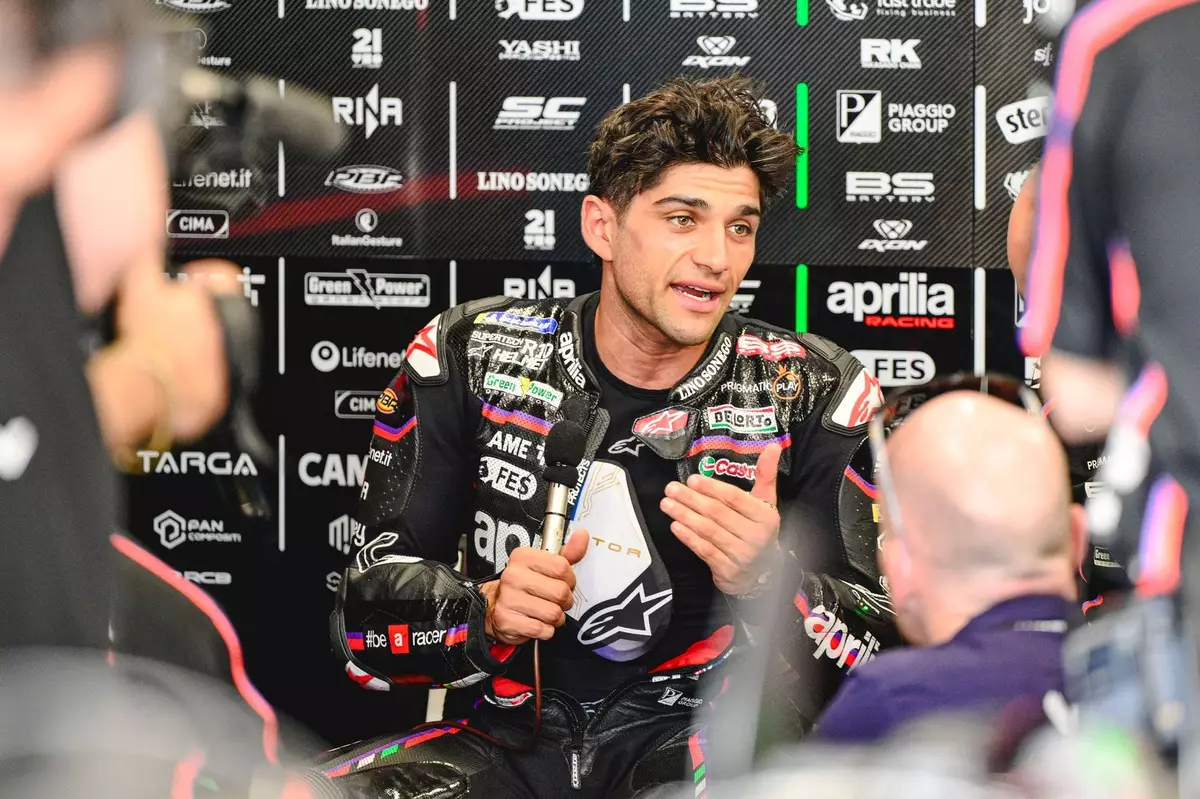In the world of MotoGP, where passion and rivalry fuel the grid, few stories have captivated the attention of fans and insiders alike as much as the unfolding saga between Jorge Martin and Aprilia. Initially hailed as a match made in racing heaven, this relationship has taken a crucial turn, with latest reports revealing that Martin plans to invoke a contract clause to exit the partnership at the end of the 2025 season. This decision, announced by Autosport, has sent shockwaves through the paddock, raising questions about Martin’s loyalty and Aprilia’s decision-making.
Aprilia’s Fractured Reputation
The air of excitement surrounding Martin’s arrival at Aprilia has quickly been overshadowed by controversy. After only one race with the team, which ended in a crash and subsequent injuries, Martin’s planned exit paints a bleak picture for Aprilia. Their reluctance to discuss the situation publicly not only raises concerns about transparency but also tarnishes their image. Once seen as a rising powerhouse in the sport, Aprilia now grapples with the perception of a team unable to retain talent and manage contract negotiations effectively.
Mutual Accountability in Blame Game
Both parties possess reasonable arguments that merit consideration. From Martin’s perspective, his contract contains a clause activated by performance metrics, specifically if he cannot place in the top three standings after a set number of races. This unwelcome reality raises eyebrows—how could a contract essentially hinge upon his performance, especially after experiencing debilitating injuries? Critics may tag Martin as disloyal for wanting to depart even prior to proving himself fully on the bike, especially as he embarks on what should be a promising partnership in MotoGP racing.
Conversely, Aprilia’s stance counters with a valid point of contention. Given Martin’s recent injuries that prevented him from competing in the majority of races this season, the team argues that the clause becomes null. Thus, they find themselves in the perplexing position of questioning Martin’s true commitment. Wouldn’t any top-tier team need to safeguard its investment against the possibility of an injury-prone athlete looking for greener pastures elsewhere?
The Unfortunate Complexity of The Contract Clause
The presence of a clause allowing Martin to exit early has invited considerable scrutiny, particularly because it has now emerged that this clause was negotiated and finalized just hours before his contract announcement. It raises an alarming question: why would Aprilia allow such a potentially damaging provision to be included in the contract? The foresight here was clearly lacking, as such a clause exposes their vulnerabilities as a team trying to establish itself as a contender in MotoGP.
Martin’s proposal for a six-race extension starting from his return could be seen as a gesture of goodwill—a compromise intended to provide Aprilia with a fair chance to showcase their capabilities. Yet, it seems unlikely that Aprilia would take such an offer at face value. With the shadows of injury lingering over Martin, can Aprilia genuinely trust a rider who might already be questioning the future? Such uncertainty presents a challenge for the Italian manufacturer.
Behind Closed Doors
What adds another layer of intrigue to this drama is the lack of public communication from both Martin and Aprilia. While the absence of statements could indicate ongoing discussions, rumors have emerged of possible talks with other manufacturers, notably Honda. The meeting between Aprilia’s Massimo Rivola and Honda’s Hikaru Tsukamoto at Le Mans underscores the potential for deeper negotiations—whether those conversations are about future collaborations or simply about the competition remains to be seen.
In the ruthless world of MotoGP, where every decision can dramatically influence a team’s trajectory, the fallout from this contract turmoil could reverberate well beyond the current season. The battles fought on the racetrack may soon be matched by legal skirmishes behind the scenes. With so much at stake, all stakeholders need to clarify their intentions and commit to transparent negotiations, lest this saga evolve into a case study of reputational damage and lost opportunities.


Leave a Reply